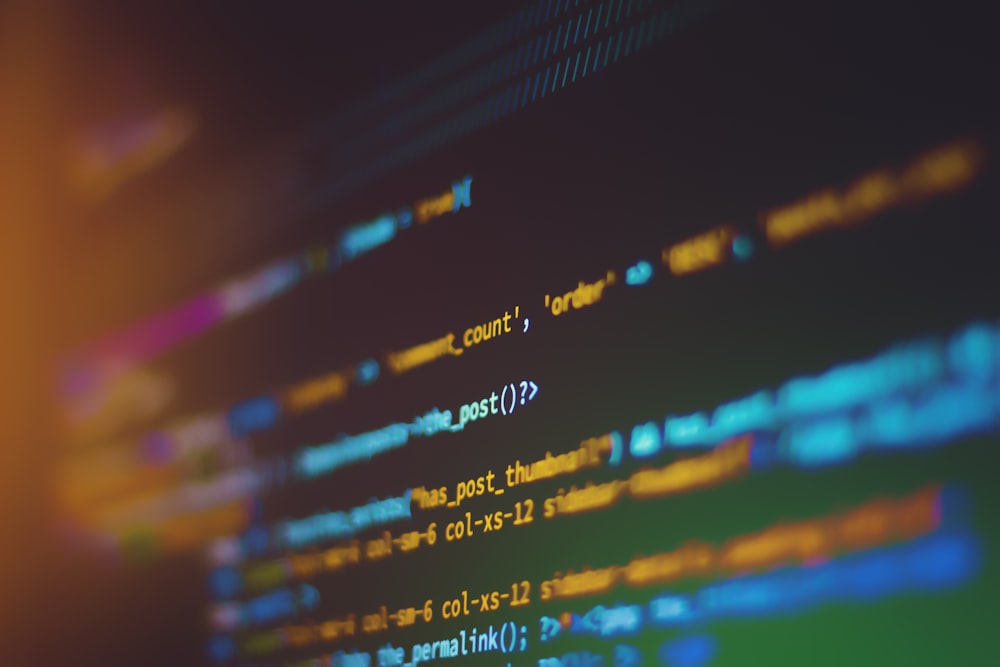The Complete Guide to QR Code Generation: Everything You Need to Know
Discover the power of QR codes, from basic concepts to advanced customization. Learn how QR codes work, their applications, and how to create professional QR codes for your business.

What Are QR Codes and Why They Matter in Today's Digital World
QR (Quick Response) codes have revolutionized how we share information in the digital age. These two-dimensional barcodes can store much more data than traditional barcodes and can be scanned instantly with any smartphone camera. From marketing campaigns to contactless payments, QR codes have become an essential tool for businesses and individuals alike.
📱 Mobile-First Technology
QR codes are designed for mobile devices, making them perfect for today's smartphone-dominated world. With built-in camera apps now supporting QR scanning, the barrier to entry is virtually non-existent.
🚀 Instant Access
Unlike typing URLs or searching for information, QR codes provide instant access to digital content with a simple scan. This speed and convenience have made them indispensable for modern communication.
The Evolution of QR Codes: From Automotive to Ubiquitous
Originally developed in 1994 by Denso Wave for tracking automotive parts, QR codes have evolved far beyond their industrial origins. Today, they're used in countless applications:
Marketing & Advertising
Product information, promotional offers, and brand engagement
Contactless Payments
Mobile payment systems and digital wallets
Event Management
Ticket validation, check-ins, and attendee tracking
Restaurant Menus
Digital menus and ordering systems
Business Cards
Digital contact information and social media links
Wi-Fi Sharing
Easy network access without typing passwords
How QR Codes Work: The Technology Behind the Magic
QR codes use a sophisticated encoding system that combines several technologies:
🔧 Error Correction
Reed-Solomon error correction allows QR codes to remain readable even when partially damaged
📊 Data Encoding
Multiple encoding modes (numeric, alphanumeric, binary, and Kanji) for different types of data
📏 Version System
40 different versions (sizes) from 21×21 to 177×177 modules
🎭 Masking
Pattern masking prevents problematic patterns that could interfere with scanning
QR Code Error Correction Levels: Choosing the Right Protection
QR codes offer four levels of error correction, each with different trade-offs:
| Level | Recovery Capacity | Best For |
|---|---|---|
| L (Low) | 7% | High-quality printing and large codes |
| M (Medium) | 15% | Good balance for most applications |
| Q (Quartile) | 25% | Smaller codes or challenging environments |
| H (High) | 30% | Maximum protection for difficult scanning conditions |
QR Code Data Types and Capacity
QR codes can store various types of data with different capacities:
📝 Numeric Data
Up to 7,089 characters (version 40, level L)
🔤 Alphanumeric Data
Up to 4,296 characters (version 40, level L)
💾 Binary Data
Up to 2,953 bytes (version 40, level L)
🇯🇵 Kanji Characters
Up to 1,817 characters (version 40, level L)
Common QR Code Applications and Use Cases
QR codes have found applications across virtually every industry:
🏢 Business and Marketing
Product Packaging
Link to product information, reviews, and purchase options
Business Cards
Digital contact information and social media profiles
Point-of-Sale
Contactless payments and loyalty programs
Event Marketing
Registration, ticketing, and engagement tracking
🏥 Healthcare and Safety
Patient Information
Medical records and medication details
Contact Tracing
COVID-19 and other health monitoring
Equipment Tracking
Medical device maintenance and calibration
Emergency Information
Quick access to safety protocols
🎓 Education and Training
Learning Resources
Access to educational content and materials
Student IDs
Campus access and attendance tracking
Library Systems
Book information and borrowing
Training Materials
Quick access to instructional videos and guides
Pro Tip
When designing QR codes for business use, always consider your target audience's scanning habits and the environment where the codes will be displayed. This will help you choose the right error correction level and size.
Designing Effective QR Codes: Best Practices
Creating QR codes that are both functional and visually appealing requires careful consideration:
📏 Size and Scaling
- • Minimum Size: At least 1 inch (2.5 cm) for reliable scanning
- • Print Resolution: 300 DPI minimum for professional printing
- • Digital Display: At least 200×200 pixels for web and mobile
- • Distance Considerations: Larger codes for longer scanning distances
🎨 Color and Contrast
- • High Contrast: Dark codes on light backgrounds work best
- • Color Limitations: Avoid red and green combinations (colorblind users)
- • Brand Integration: Use brand colors while maintaining readability
- • Background Considerations: Ensure sufficient contrast with surrounding elements
📍 Placement and Context
- • Accessibility: Place codes at comfortable scanning height
- • Lighting: Ensure adequate lighting for scanning
- • Instructions: Include clear instructions for users
- • Fallback Options: Provide alternative access methods
Advanced QR Code Features and Customization
Modern QR code generators offer extensive customization options:
🎨 Visual Customization
- • Logo Integration: Embed company logos in the center
- • Color Schemes: Custom colors for brand alignment
- • Styling Options: Rounded corners, gradients, and patterns
- • Background Images: Subtle background patterns and textures
⚡ Functional Enhancements
- • Dynamic QR Codes: Update content without changing the code
- • Analytics Tracking: Monitor scan statistics and user behavior
- • Password Protection: Secure access to sensitive information
- • Expiration Dates: Time-limited access for temporary campaigns
QR Code Security and Privacy Considerations
As QR codes become more prevalent, security and privacy concerns have emerged:
⚠️ Security Risks
- • Malicious URLs: QR codes can link to phishing sites or malware
- • Data Harvesting: Unscrupulous codes may collect personal information
- • Physical Tampering: Codes can be replaced with malicious versions
- • Network Attacks: Wi-Fi QR codes could connect to compromised networks
🛡️ Privacy Protection
- • URL Preview: Most QR scanners show the destination URL before opening
- • Trusted Sources: Only scan codes from reputable sources
- • Physical Security: Be aware of tampering in public spaces
- • Data Minimization: Limit personal information shared via QR codes
Creating QR Codes: Step-by-Step Guide
Follow these steps to create effective QR codes for your needs:
Define Your Goals
- • Determine what information you want to share
- • Identify your target audience
- • Set measurable objectives
- • Choose appropriate content type (URL, text, contact info, etc.)
Prepare Your Content
- • Ensure URLs are mobile-friendly
- • Test landing pages and content
- • Optimize for quick loading
- • Include clear calls-to-action
Choose Your QR Code Generator
- • Select a reliable, feature-rich generator
- • Consider customization options
- • Check for analytics capabilities
- • Ensure compatibility with your use case
Design and Customize
- • Choose appropriate error correction level
- • Select size and format
- • Apply brand colors and styling
- • Add logos or custom elements
Test and Validate
- • Test with multiple devices and apps
- • Verify in different lighting conditions
- • Check from various distances
- • Validate content and functionality
Deploy and Monitor
- • Place codes in strategic locations
- • Provide clear instructions for users
- • Monitor performance and analytics
- • Optimize based on results
Ready to Create Professional QR Codes?
Try our advanced QR Code Generator tool to create customized, high-quality QR codes for any purpose. With advanced customization options, error correction settings, and multiple output formats, you'll have everything you need to create QR codes that work perfectly for your specific use case.
Conclusion: The Future of QR Codes
QR codes have evolved from simple barcodes to powerful digital tools that bridge the physical and digital worlds. As technology continues to advance, QR codes will become even more sophisticated, offering enhanced security, better analytics, and more seamless user experiences.
Whether you're a business owner looking to enhance customer engagement, a marketer seeking innovative ways to connect with your audience, or an individual wanting to share information more efficiently, QR codes offer endless possibilities. The key to success lies in understanding the technology, following best practices, and creating codes that provide genuine value to your users.
Key Takeaways
- • QR codes are versatile tools that can store various types of data
- • Error correction levels should be chosen based on your use case
- • Design considerations include size, color, contrast, and placement
- • Security and privacy should always be considered when creating QR codes
- • Testing and validation are crucial for successful QR code implementation
- • The future of QR codes includes AR integration, blockchain, and IoT connectivity
Tags:
Share this article
Related Articles

The Ultimate Guide to Password Generators: Why You Need Strong Passwords
Discover why strong passwords are crucial in today's digital world and how password generators can p...

Mastering JSON Formatting and Validation: A Developer's Essential Guide
Learn why proper JSON formatting matters, how to validate JSON data, and discover best practices for...
